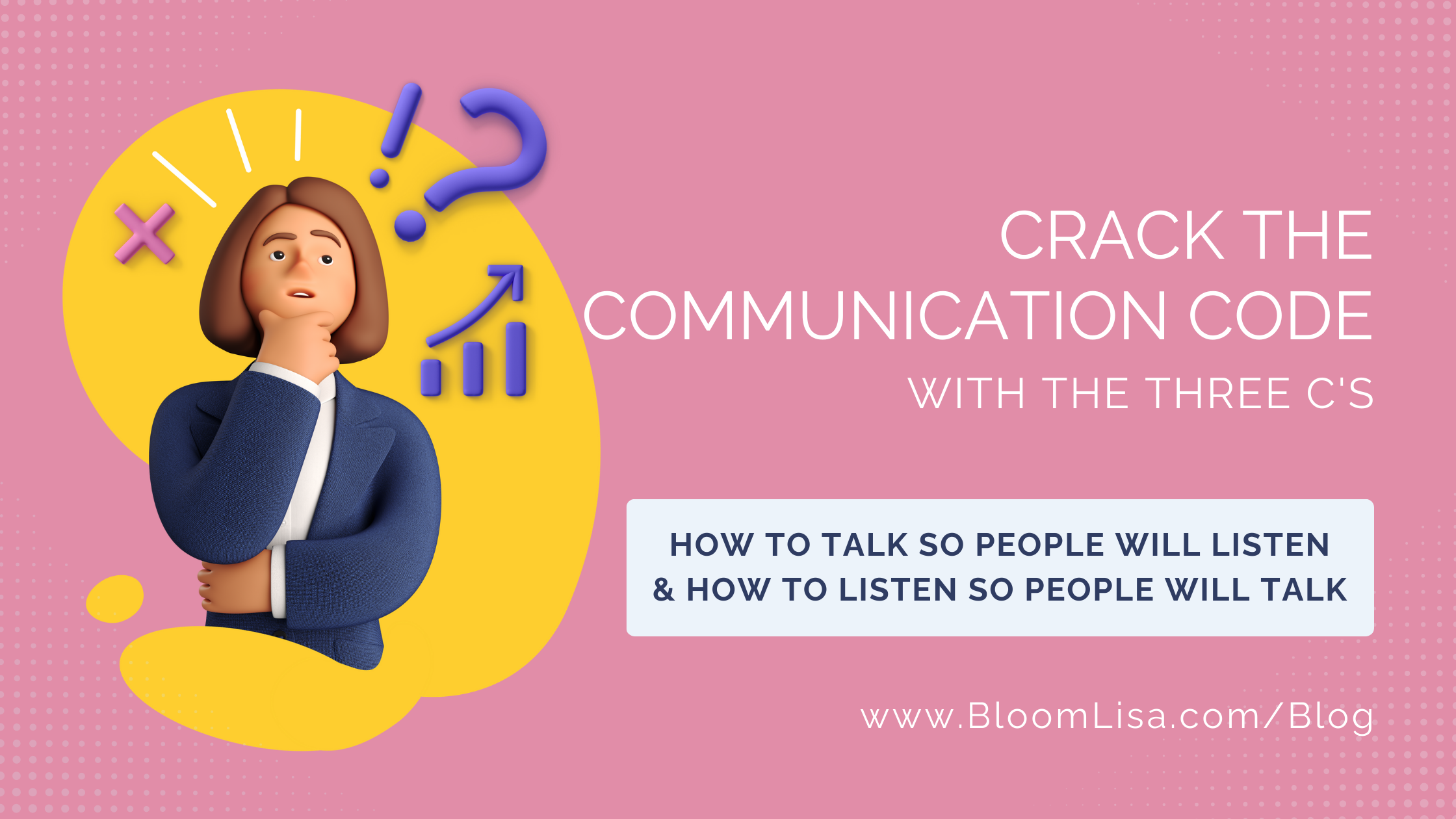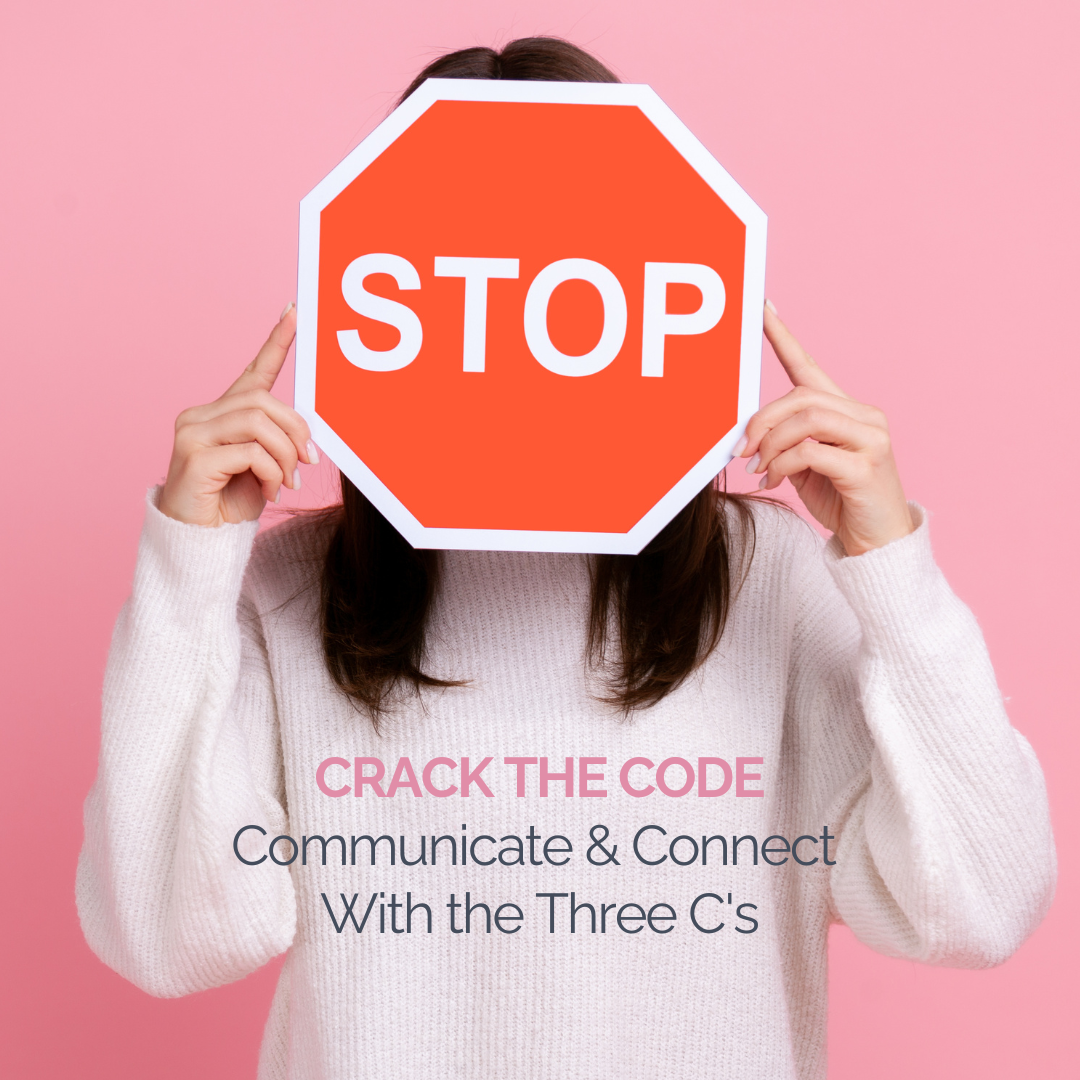
Crack the Code on Communication
Written by Lisa van Reeuwyk
Each and every relationship in your life will rise or fall on your ability to communicate, yet it remains a source of conflict, frustration and often deflates the best of intentions when approaching a conversation. Whether you’re a business owner, an executive or simply want to be a leader in your own life, pulling back the curtain on your communication patterns as you open up to new ways of listening and responding will not only increase the quality of your conversations, but your nervous system will be giving you a high five too.
Myers Briggs
VAK
True Colors
The Enneagram
Clifton Strengths
Human Design
Practicing the Three C’s of Communication
Curiosity
When you’re fully present in the conversation, both physically and emotionally, people can see that you’re there to support and listen without distractions.
Concern
Speaking our truth takes courage and is an expression of our own individual needs, not an outward attack. When you can first practice active listening and not take the communication personally, it becomes organic to practice concern.
-
Active Listening: Listen attentively and empathetically to the person’s concerns and feelings. Avoid interrupting or imposing your views on them. Acknowledge their emotions and validate their experiences. Use language that reflects back what they’ve said to ensure you understand their perspective.
-
Use Non-Judgmental Language: Be mindful of your language and tone. Avoid using judgmental or critical statements. Instead, offer supportive and neutral language that conveys empathy and care. For example, say, “I can see this is a challenging situation for you” rather than “You should’ve known better.”
-
Ask Open-Ended Questions: Encourage the person to share more about their feelings and thoughts by asking open-ended questions showing that you’re genuinely interested in understanding their perspective without making assumptions. For instance, ask, “How are you feeling about this situation?” or “Would you be open to telling me more about what happened?”
-
Offer Supportive Statements: Express your support and willingness to help if needed. Use phrases like, “I’m here for you,” “You don’t have to go through this alone,” or “Let me know if there’s anything I can do to assist.”
-
Empathize and Share Personal Experiences (if appropriate): If you’ve been through similar experiences, share your story in a way that highlights understanding rather than taking the focus away from the person. Be cautious not to make the conversation about yourself. Instead, use your experiences to show empathy and relate to their emotions. Sharing a like experience is an easy go to, so use this after practicing the other skills.
Remember, everyone’s emotional response is unique, and what works in one situation might not be appropriate for another. Flexibility, sensitivity, and genuine care are key elements to demonstrating concern effectively without escalating the situation.
Compassion
Time and attention have become our most precious resources. In any given day you’re lacking in the ability to care about one more thing, including this conversation someone dropped in your lap as you’re trying to tick something else off your never ending task list. Here are six tips to extend compassion when conflict or emotion arises:
-
Validate Emotions: Acknowledge and validate the person’s emotions, even if you don’t necessarily agree with them. Let them know that their feelings are valid and understood. It’s helpful to know your Enneagram type for this skill.
-
Offer Support: Express your willingness to help or support the person in any way you can. Ask if there’s anything specific they need or if they would like to talk more about their feelings.
-
Avoid Judgment: It’s a go-to flex for many, but when you refrain from making harsh judgments or criticizing the person’s actions or decisions, the communication between people can be transformed. Instead, focus on understanding their experiences and emotions (curiosity for the win).
-
Be Patient and Understanding: Allow the person to express themselves at their own pace. Be patient and understanding, especially if they find it challenging to open up or communicate their feelings.
-
Use Non-Verbal Cues: Pay attention to maintaining eye contact, using comforting gestures, and showing warmth through your facial expressions and body language. This varies greatly between cultures and personality types.
-
Follow Up: After the initial conversation, follow up with the person to check on how they are doing. Showing continued interest and concern reinforces your compassion and support.
Compassionate communication fosters trust and strengthens relationships. Creating a positive and nurturing environment for open dialogue is sorely needed in the workplace.
Bonus Tip
Timing really is everything. Acknowledging when it’s a good time to have important conversations so you can communicate from a place of care, concern and curiosity can be the difference between a peaceful resolution or a massive step backwards.
Check out more holistic business blogs to find your rhythm, make more money and have way more fun.






